Experimental study on gas-liquid two-phase separation of intermediate stage of biogas compressors Wang Haitao Huang Fuchuan Qi Lin 2 Luo Huijuan 1 Tong Pan 1 (1 Guangxi University, Guangxi Nanning 5300042, Chengde Petroleum College, Hebei Chengde 06700 (1) Physical and chemical differences between methane and carbon dioxide The cooling structure of the compressor has been improved, and a high-pressure gas-liquid separator is designed after the third-stage cooling pipe. After the mixture of methane and carbon dioxide is compressed by the third stage, it becomes a gas-liquid two-phase flow in the cooling pipe. Then, the two-phase flow component is introduced into the high-pressure liquid-gas separator to separate the liquid carbon dioxide, and the high-quality methane is sent to the fourth-stage cylinder for compression.
The biomass methane technology studied in this paper is a useful exploration of biogas industrialization. The research team of the author conducted a large amount of research and development on the purification, purification, compression, filling and other processes of biogas. Based on this, the process and equipment design were carried out. In order to test the operational feasibility of the process, biogas was carried out on the 180m biogas digester. Filling test 12. Two major problems were exposed in industrial tests: (1) low carbon dioxide gas removal efficiency; and (2) high pressure compressor cylinders were damaged. After systematic research and analysis by the research team, it was found that it is difficult to improve the decarbonization efficiency of biogas by chemical methods. Combining the physical properties of methane and carbon dioxide and the cylinder compression of high-pressure compressors, a physical separation method is proposed, which is to improve the intermediate stage of the compressor, and design a high-pressure gas-liquid after the third-stage cooling of the outer coil. A separator that produces and separates a gas-liquid two-phase flow by controlling temperature and pressure during operation. Practice has proved that this separation method has high efficiency in removing carbon dioxide and can achieve significant effects.
2 Biomass methane technology industrial test 1 The basic foundation of biomass methane technology Biogas is organic waste water, industrial wastewater, municipal sewage and garbage, aquatic plants and algae, which are processed by human and livestock manure, straw, agricultural organic waste, agricultural and sideline products. Under anaerobic conditions, a flammable gas produced by microbial decomposition and fermentation, the main components of which are methane and carbon dioxide, in addition to a small amount of hydrogen, nitrogen, carbon monoxide, hydrogen sulfide and ammonia. Usually, the methane content in biogas is 60% ~ 70%, carbon dioxide is 30% ~ 4%, and the remaining gas content is very small, about 2% of the total volume. The combustible components in biogas are mainly methane, carbon dioxide gas is not The calorific value of the 1rf biogas is about 21,520, which is equivalent to the calorific value of 1.45m gas or 0 69rf gas.
Biomass methane technology is a new technology based on biogas purification and purification, which ultimately converts biogas into high concentration and high calorific value methane. The calorific value of the proportion change of the components in the biogas can be seen in Table 1. It can be seen that the methane is increased to a certain proportion, and the calorific value of the gas is greatly improved, which lays a foundation for the industrial application of biogas.
Table 1 Quality performance characteristics of the change in the proportion of biogas components The thermal value sieve high pressure dryer performs pressure swing adsorption dehydration.
Gas transmission: Due to the small gas pressure in the biogas tank, in order to ensure the smooth flow, the 2V-034/2 type biogas compressor is connected in series to carry out gas transmission.
14/1.5-200 biogas compressor compressed to 20MPa tower, decarbonization tower, 2V034/2 type biogas compressor, 2V-014/1.5-200 biogas compressor, buffer tank, GZF-12/200 molecular sieve high pressure dryer , 50L and 81L high pressure gas cylinders, flow meters, pressure gauges, etc.
Gas production in the 180m biogas tank: summer tank gas production rate: d1, gas production per day is about: 180X0.45 and cooling system: four compressor cooling system: cooling system includes cylinder cooling and compressed medium cooling, cylinder cooling by surrounding cylinder The annular water compartment of the wall is filled with water for cooling, and the cooling of the cylinder can usually take away the frictional heat, so that the cylinder wall does not affect the lubricating oil performance due to the excessive temperature, so the requirement is not high. The compression medium is cooled by the compressed gas through the first, second, third and fourth stage coolers. The first, second, third and fourth stage coolers are all coiled and integrated. The cooling pipe is a gas flow passage, and the outside of the pipe is a cooling water flow passage. The cooling water for this test is used once.
According to the process flow chart, the equipment is connected. At the initial stage of the test, 1000 kg of cow dung is thrown into the 180m biogas tank and fermented for 1 day. Then, it is checked whether the biogas tank and the gas storage tank have been enriched with biogas, and then the equipment is tested after nitrogen evacuation. . For safety reasons, the maximum pressure in the initial stage of compression is controlled to collect 2 bottles (501 and 81 L) of gas after 10 MPa - period of time. After the next 2 days, the same test was carried out, and the compressor discharge pressure was appropriately increased to finally reach 20 MPa. (4) Component test results The main process flow was mainly as follows: Partial water vapor in the biogas was removed. Late dry mining name carbon dioxide methane viscosity 屮 Pas) boiling point (C thermal conductivity (W / m) critical point temperature (C) pressure (MPa can be seen from Table 2, carbon dioxide critical temperature is 31.1 ° C, critical pressure is 7.38MP, Compared with methane gas, carbon dioxide gas is easy to liquefy. The three-stage rated exhaust pressure of 2V-014/1. 5-200 biogas compressor exceeds the critical pressure of carbon dioxide, because the temperature of the controlled cylinder is low during operation. The temperature of the three-stage cylinder is stabilized at or below the critical temperature of carbon dioxide, and the liquid is in contact with the cylinder wall, which deteriorates the lubrication and increases the wear of the cylinder. When the carbon dioxide liquid is not smooth, it will accumulate more and more, when the liquid volume in the cylinder exceeds the compression. When the clearance volume of the machine causes a liquid impact phenomenon 31, the machine is damaged. The compressed gas discharged from the three-stage cylinder becomes a gas-liquid two-phase flow state, enters the external cooling coil device, and is controlled by the external coil temperature. The lower the carbon dioxide is substantially liquefied. When the two-phase flow enters the fourth-stage cylinder with the gas pipeline, the cylinder continues to be damaged.
Improvement of gas-liquid separation in the intermediate stage of 2V-014/1.5-200 compressors 41 Improvement ideas The decarburization process in industrial applications is basically divided into chemical methods and physical methods. The chemical method is generally applied to large and medium-sized tower equipment, and the carbon dioxide gas is gradually absorbed by layer reaction and adsorption. For small tower equipment, because of the high gas flow rate, it is difficult to ensure sufficient contact between carbon dioxide and the reactants, and it is difficult to remove carbon dioxide gas with high efficiency. The physical method is to separate the physicochemical properties in the composite gas. 151. The main components of the biogas after purification and compression are methane and carbon dioxide. As can be seen from Table 2, the biggest difference between the two gases is the ease of liquefaction. The critical temperature of methane liquefaction is low, which is 82% difficult to liquefy. The opposite is true for carbon dioxide, and the liquefaction critical temperature is relatively high, which is 31. 1 ° Q is an easily liquefied material. Therefore, physical separation is a better method. 161. The third-stage rated pressure of the 5-200 biogas compressor reaches the liquefaction critical pressure of carbon dioxide, and if the temperature in the third-stage cylinder is controlled to be higher than the critical temperature of carbon dioxide, Unpurified carbon dioxide gas does not liquefy in the cylinder and does not cause damage to the three-stage cylinder. After the composite gas is discharged from the tertiary cylinder, it enters the external cooling coil unit. If the external temperature is controlled below 31.1 ° C in the test, the carbon dioxide is rapidly liquefied. As a result, the compressed gas becomes a gas-liquid two-phase flow state in the coil. Then, the gas-liquid two-phase flow is introduced into the high-pressure gas-liquid separator. The structure is tangentially entered, and the gas is rotated by the flow of the spiral plate. Under the action of centrifugation, the liquid is sucked to the inner wall of the cylinder. Flow down to the bottom. Pure methane gas is introduced into the fourth stage cylinder and compressed to 20MPai to fill the inlet bottle. 71. The unpurified carbon dioxide part is liquefied. It is oxidized to reduce the liquid carbon dioxide in the high pressure gas-liquid separator quickly. : After the bookmark1 test is completed, close the cylinder. In order to avoid carbon dioxide pollution to the atmosphere, the compressor third and fourth stage vent valve is connected to the alkaline solution containing lime water, and the vent valve is opened. Since the pressure 42 implementation method opens the third stage exhaust pipe of the compressor, the high pressure gas-liquid separator is connected. The high pressure gas-liquid separator is placed in a compressed medium cooling system to control its temperature. In order to smoothly enter the gas-liquid two-phase flow in the third-stage discharge pipe to the gas-liquid separator, the gas-liquid separator is connected to the lowest point of the three-stage discharge pipe.
The parallel cooling system is changed to two independent cooling systems to facilitate the control of temperature: one is connected to the annular water compartment of the first, second, third and fourth cylinders and the oil cooler after the cooling water is connected in parallel, such as The other cooling water first enters the water container composed of the first and second coolers, then enters the closed water container composed of the tertiary cooler and the high pressure gas-liquid separator, and finally enters the four-stage cooler and the oil and gas separation. Drain after the outer layer of the device. The specific design sees the cooling route of the cylinder and the oil cooler strictly control the temperature of the third and fourth cylinders, so that the corresponding temperature is higher than the critical point temperature of carbon dioxide, lower than the rated temperature of the biogas compressor, thus ensuring that the carbon dioxide is gas in the cylinder. The cooling method of the coolers and separators of each stage is determined by the heat conduction formula: in the case where the heat transfer coefficient and the temperature difference are constant, the heat exchange amount can be changed by designing the area A participating in the heat exchange, thereby effectively controlling the heat conduction temperature.
By giving the heat coefficient, the heat flux density can be changed. The heat coefficient a is related to the physical properties of the fluid, the surface feature size of the solid, and the forced convection flow rate. In the case where the physical properties of the fluid and the size of the solid surface structure are constant, changing the convection flow rate will change the heat transfer coefficient.
Based on this, changing the cooling water flow rate can easily change the control feed temperature.
43 On-site operating status 99 strictly controls the third and fourth-stage tube temperature % high-pressure gas transformation: the compressor is re-invested in the filling test. The bookmark2 device is in operation, during the compressor boosting process, from 0 to 7.38. The carbon dioxide in the pressure range of MP3 can't be removed, but it has been proved that the filling pressure is shorter, and the carbon dioxide gas mixed in the process has little effect on the final filling gas, which is basically negligible. In the period when the fourth-stage cylinder exceeds 7.38 MPa and the third-stage cylinder has not reached 7.38 MPa, the carbon dioxide will be liquefied due to the cooling of the fourth-stage exhaust pipe, and then enter the oil separator for separation, which is also strictly controlled. The most fundamental cause of the temperature of the four-stage pipeline. After the third stage cylinder exceeds 7.38 MPa, the carbon dioxide will be separated by the high pressure gas-liquid separator behind the third stage pipeline.
The test results of the final gas composition in the gas cylinder showed that the carbon dioxide gas was basically removed, and the integrated heat value of the final gas was improved.
After the test is completed, close the cylinder. The alkaline solution smoothly removes the separated carbon dioxide by draining through the vent valve.
5 Conclusions The key to improving the quality of biogas heat energy using biomass technology is to remove carbon dioxide. In small decarbonization towers, chemical methods are difficult to remove carbon dioxide cleanly, and the decarburization efficiency is generally low.
The fundamental physical difference between methane and carbon dioxide is the difference in liquefaction capacity, so that it can be liquefied on one side, the other in a gaseous state, and then mechanically separated.
According to the characteristics of compressor compression and cooling, the cooling separation structure is improved, the cooling water flow speed is controlled reasonably, and the temperature of the third-stage and fourth-stage exhaust pipes is controlled to liquefy the carbon dioxide, and then the two-phase flow is introduced into the high-pressure gas-liquid separator. Separate.
After the test is completed, close the cylinder. In order to avoid the pollution of carbon dioxide to the atmosphere, the third and fourth stage vent valves of the compressor are connected to the alkaline solution containing lime water, and the vent valve is opened. Due to the pressure reduction, the liquid carbon dioxide in the high pressure gas-liquid separator changes rapidly. The gas escapes and is removed by pipe drainage into an alkaline solution.
Practice has proved that the modified compressor works well in the filling process, the carbon dioxide in the biogas is basically completely removed, and the heat energy quality of the biogas is greatly improved.
Technical parameters
|
Name |
specifications |
||||
|
Converter |
45tons |
60tons |
80tons |
90tons |
120tons |
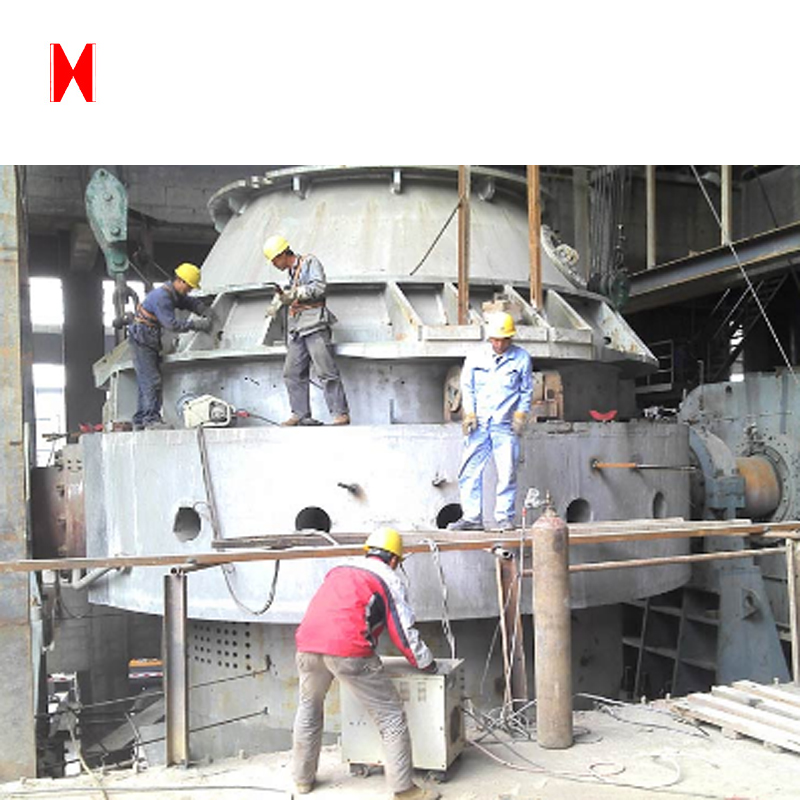
Product introduction
Luoyang Hongxin Heavy Machinery CO., LTD. can design and product all kinds of vertical or horizontal converter below 120 tons and mixer furnace below 900 tons.
Company Introduction

Luoyang Hong Xin Heavy Co., LTD. is located in Luoyang Xin'an Industrial Park, Luoyang Hongxin Heavy Machinery Co., Ltd is an enterprise featured with industrial designing, processing and manufacturing, which is qualified for import-export trade. Covering an area of 15,000 square meters and holding an annual production value of 80 million RMB, the company of 20 million RMB registered capital has total 100 staff members, among which there are 20 engineering technicians owning senior and medium professional titles and 40 intermediate and senior technicians capable of product designing and developing.
Hongxin is dedicated to produce reducers, hoists, crushers, Ball Grinding Mills and the equipments of screening, coal washing, metallurgy and cement, and replacement parts. Meanwhile, we provide the perform maintenance service for various series of equipments. There are 52 large-scale equipments applied into the manufacturing process, such as T200 CNC floor boring and milling machine, YK 73125 CNC molding gear grinding machine, YK322B CNC molding gear grinding machine, Y3200 gear hobbing machine, Y1600 CNC gear sharper, 4m vertical lathe, 6.3m CNC vertical lathe, T110 CNC boring machine, and 52 middle-sized productive and assistive equipments, which integrate strong manufacturing and processing capability with complete managing system of production and technology, quality management system and comprehensive testing measures.
Certificates
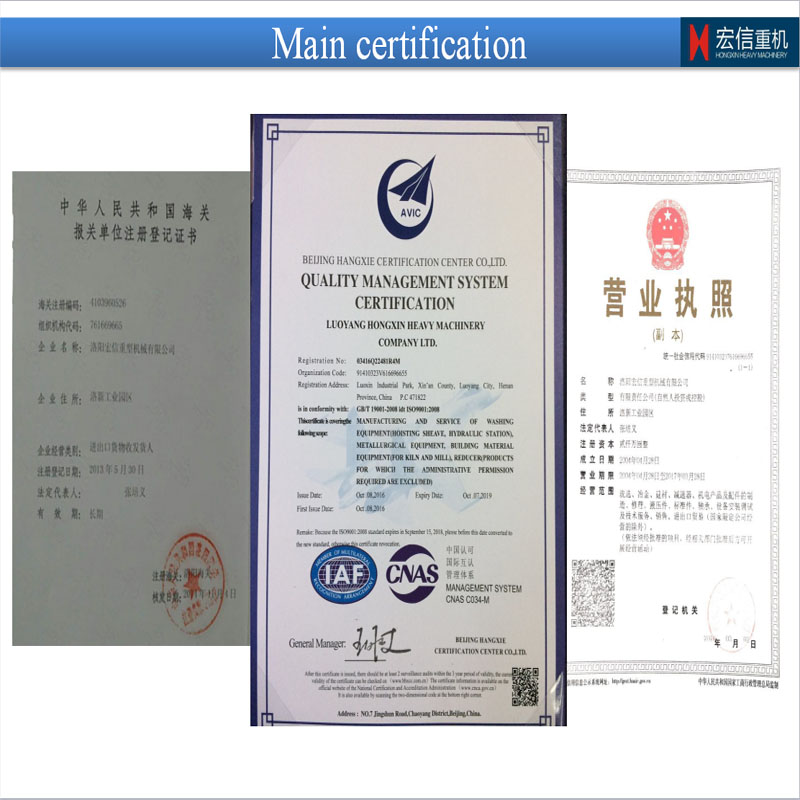
Contacts
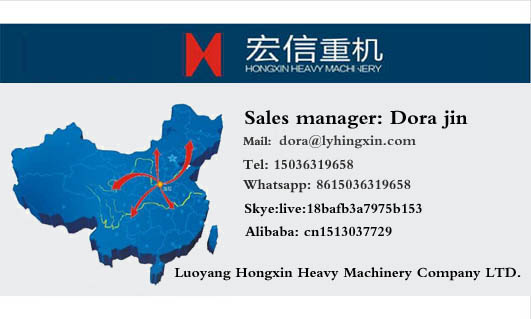
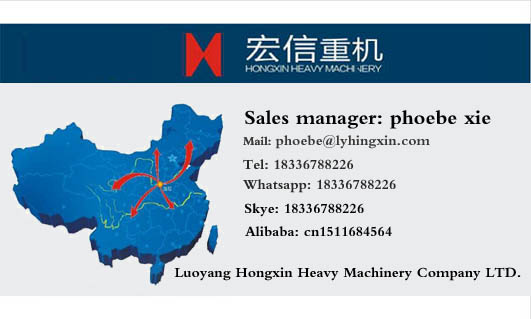
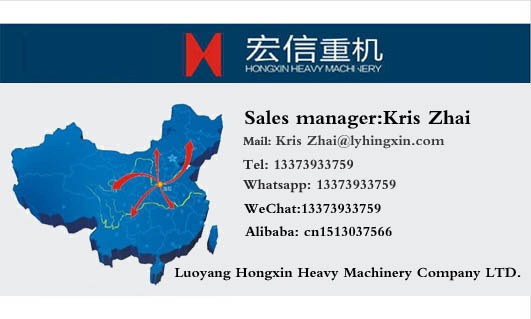
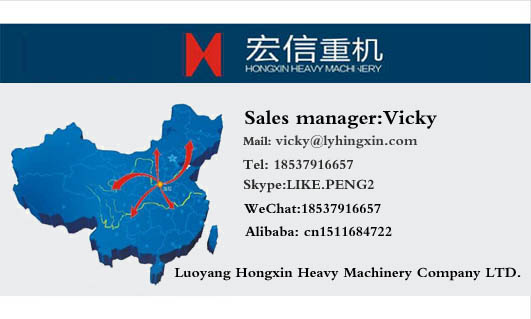
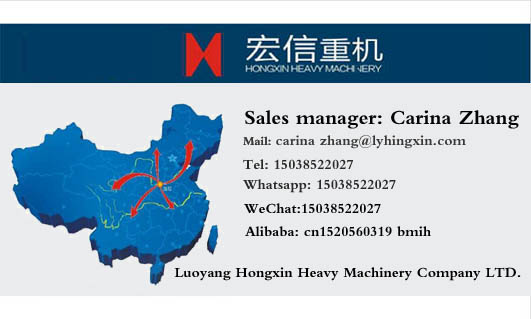
Converter Machine,Engraving Converter Machine,Frequency Converter,Frequency Converter Compressor Machine
Luoyang Hongxin Heavy Machinery CO., TLD. , https://www.hxreducer.com